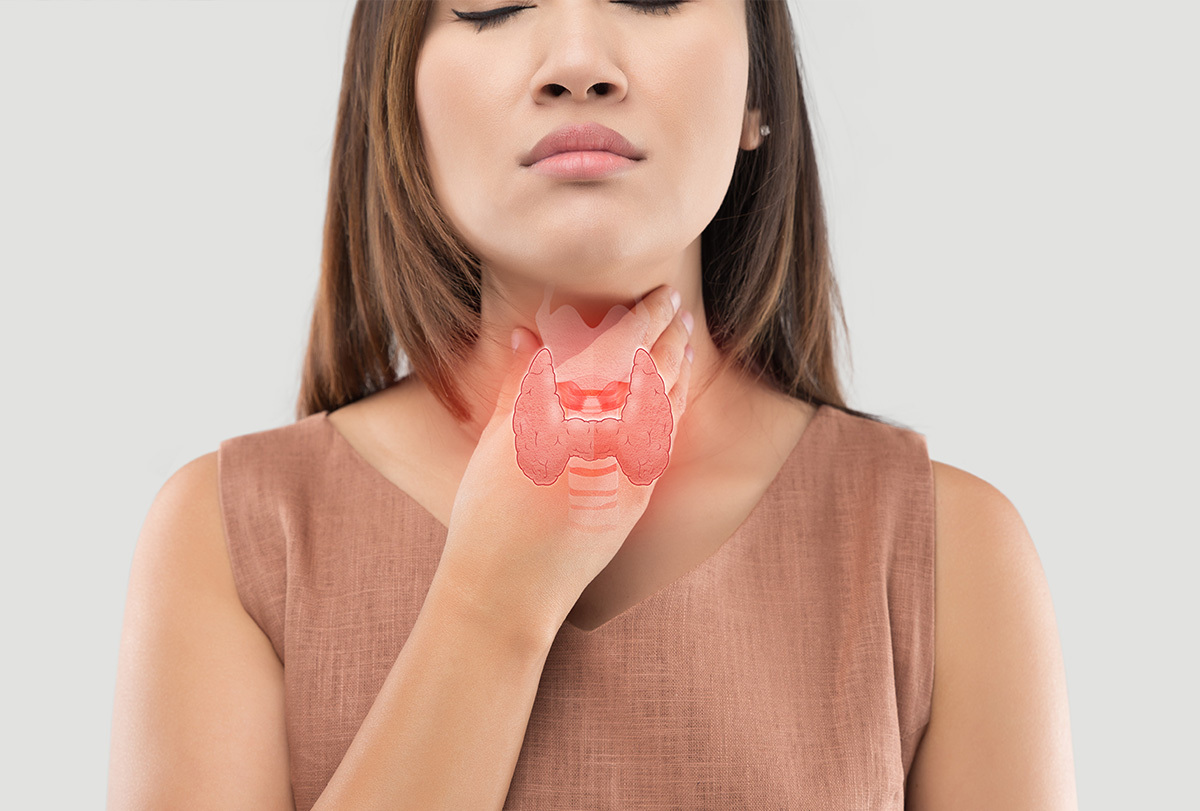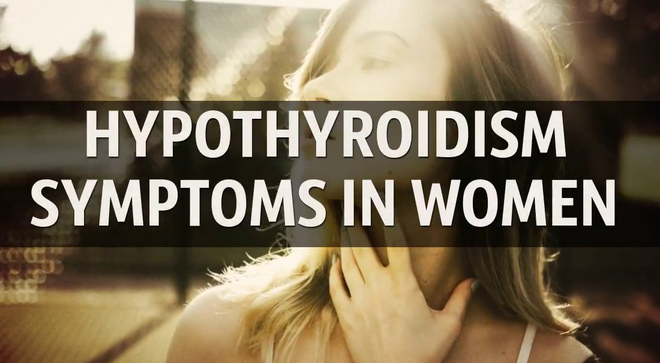Hypothyroidism can affect both men and women. Women are more likely to suffer from an underactive thyroid than their male counterparts. Also, because of the differences between the male and female body, hypothyroidism may affect a woman differently than it may affect a man. These are the topics and issues addressed in this article, and they are extremely important topics and issues for women with an underactive thyroid, or women who suspect they have one.
.jpg)
General symptoms of hypothyroidism
Knowing what the symptoms of hypothyroidism are and what to look for is extremely important. Because the thyroid gland regulates and affects so many different functions in the female body, being aware of all the symptoms associated with hypothyroidism can help you be more aware of a problem. It is also important to note that hypothyroidism is a slow onset condition. Rather than appearing all at once, or in a few days, as with a common cold, hypothyroidism often doesn’t begin for several years.
The first symptoms of underactive thyroid are fatigue or tiredness. As your condition progresses, you may experience weight gain, constipation, depression, joint or muscle pain, muscle weakness, increased sensitivity to cold, heavy periods or periods that last longer, pale and dry skin, a hoarse voice, swollen skin (especially on the face), and increased fatigue.
If you experience these symptoms, have your doctor test your thyroid function and your bad cholesterol (LDL) levels. High LDL levels are often associated with hypothyroidism and can lead to additional problems in conjunction with your underactive thyroid symptoms.
The unique impact of hypothyroidism on women
In addition to hypothyroidism’s above general symptoms, an underactive thyroid affects women in some very unique ways. The thyroid has a lot to do with a woman’s reproductive system, and so having an underactive thyroid causes several different reproductive and puberty problems.
The thyroid is essential in puberty, and individuals who experience an early or late onset of puberty can generally attribute that irregular onset to their thyroid levels. An underactive thyroid causes a late onset of puberty, and may also interfere with other growth areas. In addition to the beginning of puberty, an underactive thyroid can also cause problems with the menstrual cycle, causing a woman’s periods to become very heavy, or last longer than usual. Hypothyroidism can also lead to irregular periods or the disappearance of menstruation altogether. Because of these wide variations in menstruation’s impact, it is essential to seek your gynecologist’s help if you experience changes in your menstrual cycle. Even if they seem minimal, and especially if they are accompanied by other symptoms that may indicate an underactive thyroid problem.
As you might expect from its impact on menstruation, hypothyroidism also causes reproductive problems in women. An underactive thyroid affects ovulation and can interfere with or prevent ovulation, reducing fertility. It also increases the risk of cysts in the ovaries, but oddly enough, increases milk production in the breasts.

During pregnancy, slow thyroid function can be harmful to your growing baby and increase your risk of thyroid problems after delivery. In many cases, hypothyroidism during pregnancy leads to postpartum thyroiditis. If you suspect a problem with your thyroid before you become pregnant, have it thoroughly examined and resolve the issue as soon as possible. If you are already pregnant, consult your doctor for treatment options that are safe for you and your baby.
As if these problems weren’t enough, hypothyroidism can also cause problems with menopause, causing early menopause in some people. Early menopause is the menopause that begins before, or during your early 40s. Unfortunately, after early menopause has started, there is little you can do to stop it, and management will need to be discussed with your doctor.
Treatment of hypothyroidism
Once you have been diagnosed with hypothyroidism, you can begin discussing treatment options with your doctor. There are several options for treatment and management, and your treatment plan will depend on your preference, your doctor’s choice, and the specifics of your particular condition.
The most common treatment option used by doctors is to prescribe replacement hormones to bring your levels back to normal. This hormone replacement is usually in the form of an artificial thyroid hormone called T4. By taking this artificial T4, your body begins to produce its T3 (a secondary thyroid hormone produced from T4).
If your body does not begin to produce its T3, your doctor may also prescribe an artificial T3 hormone. This combination therapy will help your body get back to normal, and your symptoms slowly disappear. In most cases, people diagnosed with hypothyroidism continue to be treated with these artificial hormones for life. However, promise for stopping hormone pills has been shown in those who follow a healthy lifestyle for thyroid and thyroid hormones, including a specific nutrition plan and exercise.


